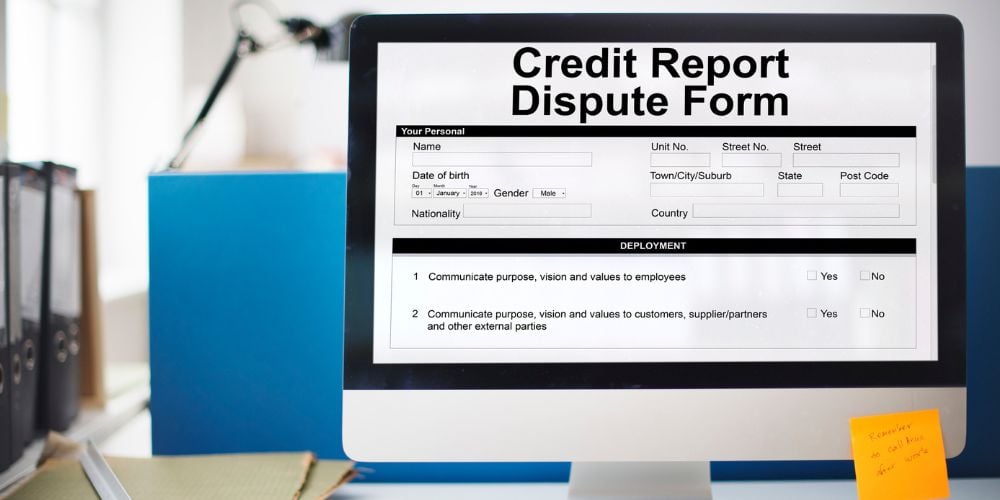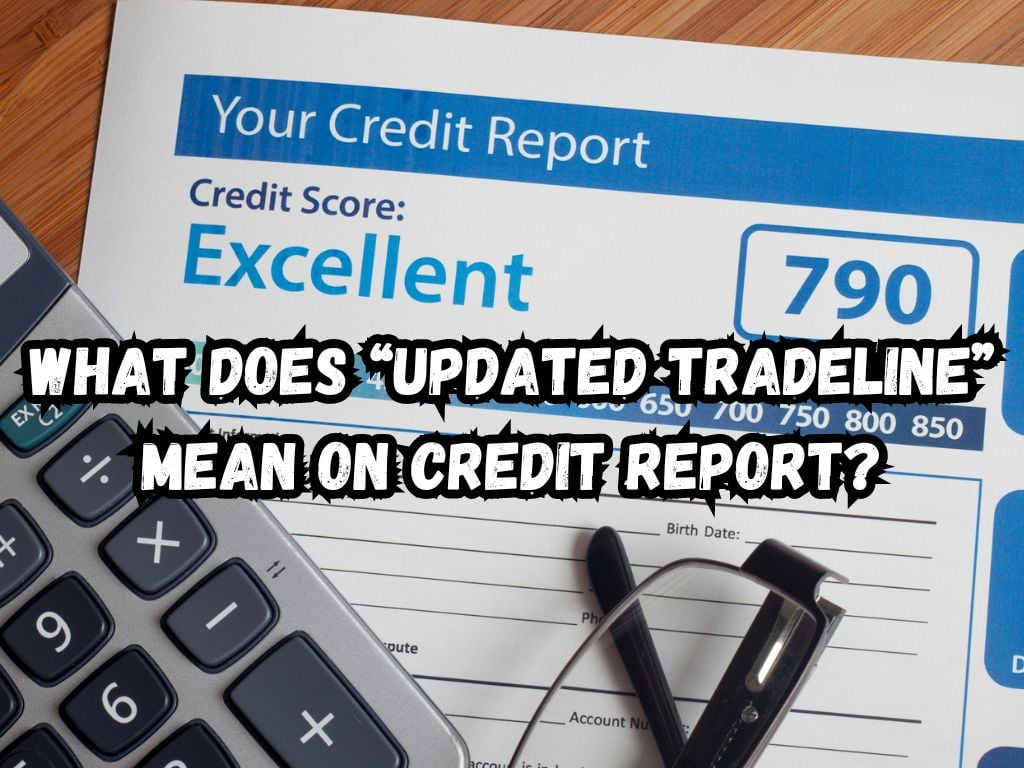When it comes to maintaining good financial health, understanding your credit report is crucial.
Your credit report provides a detailed summary of your credit history, which lenders use to assess your creditworthiness. One important aspect of a credit report is the presence of tradelines.
Tradelines represent credit accounts, such as credit cards, loans, or mortgages, and are integral to determining your credit score.
In this article, we will look into what does updated tradeline mean on credit report, focusing specifically on the significance of “updated tradelines” and how they can impact your credit report.
By understanding what these updates mean and why they occur, you can take proactive steps to manage your credit effectively.
Understanding Tradelines
Tradelines, in essence, are credit accounts that appear on your credit report. They provide a snapshot of your borrowing history and payment behavior, enabling lenders to assess your creditworthiness.
Tradelines can include credit cards, personal loans, student loans, auto loans, mortgages, and any other account that involves borrowing money.
Each tradeline contains essential information such as the name of the lender, the account number, the account status, the outstanding balance, and the payment history.
This information helps lenders evaluate your creditworthiness and determine the risk associated with extending credit to you.

What Does “Updated Tradeline” Mean On Credit Report?
Now that we have a basic understanding of tradelines, let’s take a closer look at what an “updated tradeline” signifies.
An updated tradeline refers to changes or updates made to the information associated with a particular credit account on your credit report.
These updates can be triggered by various factors, including changes in payment activity, credit limit adjustments, account closures or openings, reporting errors, or credit line changes.
Reasons for an Updated Tradeline
Payment Activity
One common reason for an updated tradeline is changes in payment activity. Your payment history is a critical factor in determining your creditworthiness.
Timely payments demonstrate responsible financial behavior and can positively impact your credit score. On the other hand, late payments can have adverse effects.
If you make a late payment on a credit account, the lender may report this as an updated tradeline on your credit report.
This update indicates that a payment was made after the due date specified in the terms of the agreement. Late payments can lower your credit score and remain on your credit report for up to seven years, so it’s crucial to prioritize timely payments.
Credit Limit Changes or Balance Updates
Another reason for an updated tradeline is changes in credit limit or balance updates. Your credit limit represents the maximum amount of credit available to you on a particular account.
If your credit card issuer or lender adjusts your credit limit, either by increasing or decreasing it, this change will be reflected as an updated tradeline on your credit report.
Credit limit increases can have a positive impact on your credit score by reducing your credit utilization ratio—the ratio of your total credit card balances to your total credit card limits.
It’s generally recommended to keep your credit utilization below 30% to maintain a good credit score.
Account Closure or Opening
Account closures or openings can also lead to updated tradelines on your credit report.
When you close an account, such as a credit card or loan account, this change will be reflected in an updated tradeline. Similarly, opening a new account, such as a credit card or loan, will result in the addition of an updated tradeline.
It’s important to note that closing an account may not immediately remove it from your credit report. Closed accounts can still appear on your report for a certain period, providing a historical record of your credit history.

Reporting Errors or Disputes
In some cases, an updated tradeline may result from reporting errors or disputes. Mistakes or inaccuracies on your credit report can lead to negative impacts on your credit score.
If you notice any errors, you have the right to dispute them and request corrections from the credit reporting agencies.
If a dispute leads to a modification of the information associated with a tradeline, this change will be reflected as an updated tradeline on your credit report.
It’s essential to regularly review your credit report to identify any inaccuracies and take steps to rectify them promptly.
Credit Line Increases or Decreases
Lastly, credit line increases or decreases can trigger updated tradelines. Whenever a creditor adjusts your credit line—by either increasing or decreasing it—this change will be reflected as an updated tradeline on your credit report.
Credit line increases can potentially improve your credit utilization ratio and increase the amount of credit available to you, which can positively impact your credit score.
Conversely, a decrease in your credit line may reduce your available credit and potentially raise your credit utilization ratio, which can have a negative effect on your credit score.
How Updated Tradelines Affect Your Credit Score
Now that we understand why updated tradelines occur, let’s explore how they can affect your credit score. Changes in your tradelines can have both positive and negative impacts on your credit score, depending on the nature of the update.
Positive changes, such as timely payments, credit limit increases, or successful disputes of inaccuracies, can potentially boost your credit score. Conversely, negative changes, such as late payments or increases in outstanding balances, may have a detrimental effect on your credit score.
Therefore, it’s essential to maintain healthy payment habits, manage your credit limits and balances responsibly, and promptly address any reporting errors to ensure the overall health of your credit report and score.
Frequently Asked Questions
Q: What should I do if I notice an error in my updated tradeline?
A: If you identify an error in your updated tradeline, it’s important to dispute the inaccuracy with the credit reporting agencies. You can do this by submitting a formal dispute, including any supporting documentation, and requesting a correction.
Q: How long does it take for an updated tradeline to reflect on my credit report?
A: The timeframe for updated tradelines to appear on your credit report varies. In general, updates should be reflected within 30 to 45 days, but it’s advisable to regularly monitor your credit report to ensure accuracy.

Q: Will an updated tradeline automatically improve my credit score?
A: The impact of an updated tradeline on your credit score depends on the specific change. Positive changes, such as timely payments or credit limit increases, can potentially improve your credit score. However, negative changes, such as late payments, may cause your score to decrease.
Q: Can I remove a negative tradeline from my credit report?
A: Negative tradelines, such as missed payments or collections, can remain on your credit report for up to seven years. However, with responsible financial behavior over time, these negative marks can have less impact on your credit score.
Pro Tips for Managing Updated Tradelines
To effectively manage updated tradelines and maintain a healthy credit profile, consider the following tips:
- Regularly monitor your credit report: Stay vigilant by checking your credit report regularly to spot any changes or inaccuracies that may impact your creditworthiness.
- Maintain a healthy payment history: Prioritize timely payments on your credit accounts to build a positive payment history, which is essential for a good credit score.
- Properly manage credit limits and balances: Keep a close eye on your credit limits and balances to manage your credit utilization effectively. Aim to keep your credit utilization below 30% to maintain a healthy credit score.
Conclusion
Understanding the significance of updated tradelines on your credit report is vital for managing your credit effectively.
By comprehending the reasons behind these updates and their potential impact on your credit score, you can take proactive steps to maintain a healthy credit profile.
Remember to prioritize timely payments, manage your credit limits and balances responsibly, and regularly review your credit report to ensure accuracy and help you achieve your financial goals.


 Tags:
Tags:










